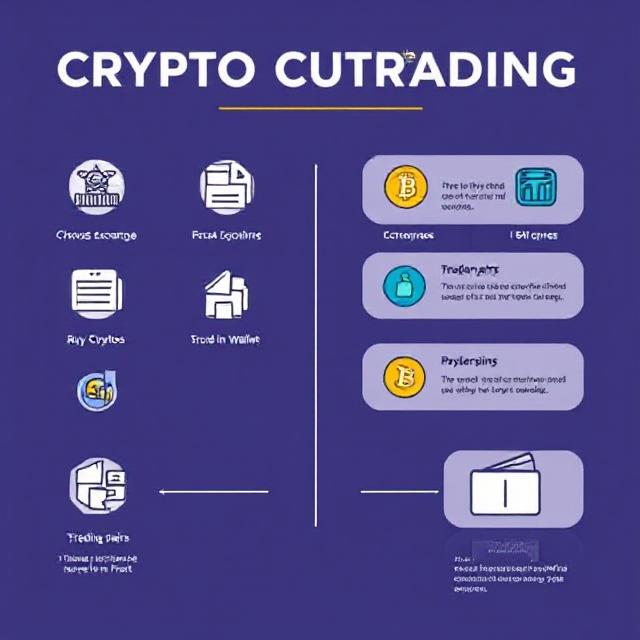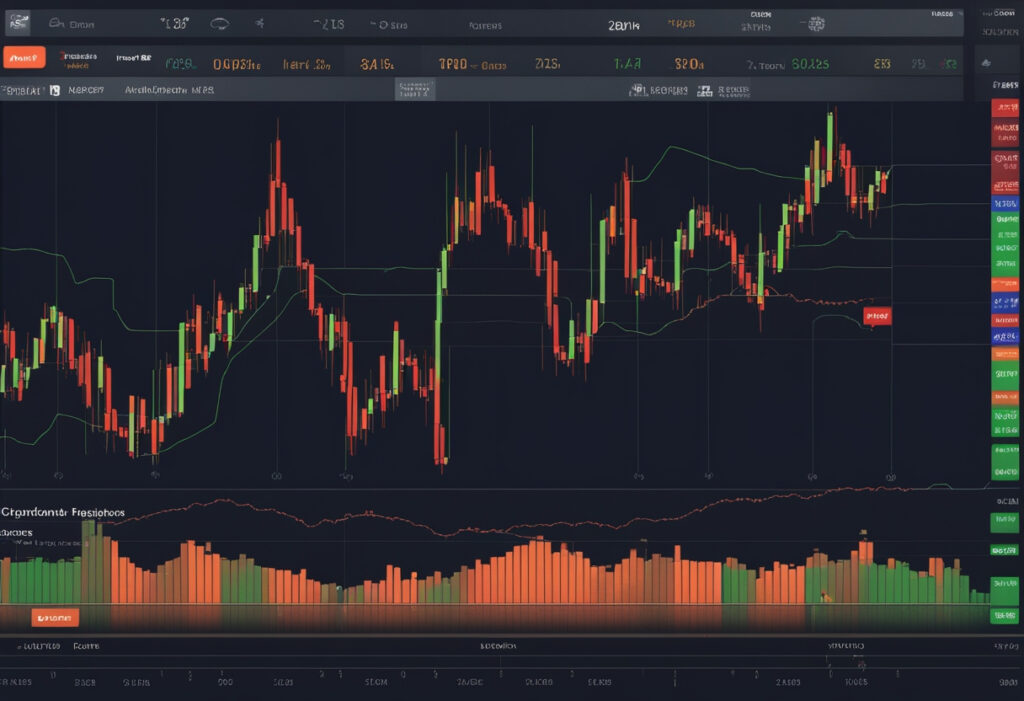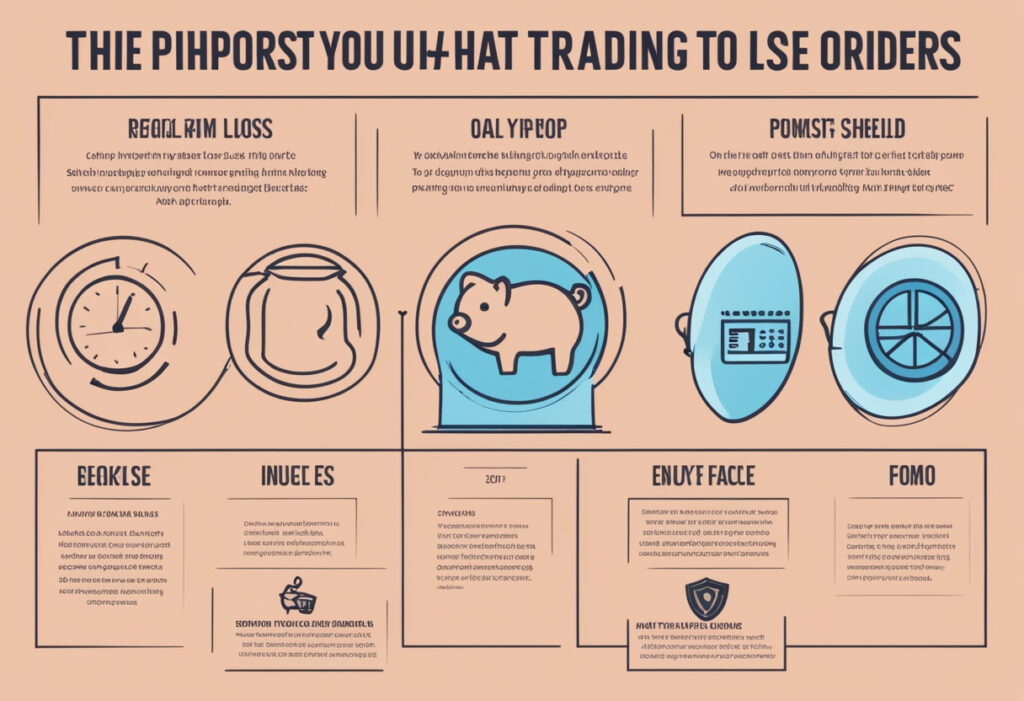Getting Started with Cryptocurrency Trading for Beginners
Cryptocurrency trading has become one of the most popular ways to invest and make money online. With the rise of digital currencies like Bitcoin, Ethereum, and thousands of altcoins, the crypto market offers immense opportunities for beginners and experienced traders alike. However, trading cryptocurrency can be complex and risky if you don’t know what you’re doing. This guide will walk you through everything you need to know about how to trade cryptocurrency for beginners, from understanding the basics to developing a solid trading strategy.
Crypto trading can feel overwhelming at first, but this guide will walk you through the process step by step. If you’re new to digital currencies, start by learning the basics of blockchain and how exchanges work.
Table of Contents
- What is Cryptocurrency Trading?
- Why Trade Cryptocurrency?
- Getting Started with Cryptocurrency Trading
- Choose a Reliable Cryptocurrency Exchange
- Set Up a Crypto Wallet
- Understand the Basics of Blockchain Technology
- Key Concepts in Cryptocurrency Trading
- Market Orders vs. Limit Orders
- Trading Pairs
- Volatility and Liquidity
- Types of Cryptocurrency Trading
- Day Trading
- Swing Trading
- Scalping
- HODLing (Long-Term Investing)
- How to Analyze the Cryptocurrency Market
- Fundamental Analysis
- Technical Analysis
- Sentiment Analysis
- Developing a Cryptocurrency Trading Strategy
- Risk Management
- Setting Realistic Goals
- Diversification
- Common Mistakes Beginners Make in Crypto Trading
- Tips for Successful Cryptocurrency Trading
- Conclusion

1. What is Cryptocurrency Trading?
Cryptocurrency trading involves buying, selling, and exchanging digital currencies on a cryptocurrency exchange or trading platform. Unlike traditional stock trading, crypto trading operates 24/7, allowing traders to take advantage of price fluctuations at any time. The goal of trading is to buy cryptocurrencies at a low price and sell them at a higher price to make a profit.
Cryptocurrency trading can be done in various ways, including spot trading, margin trading, and futures trading. Each method has its own risks and rewards, and it’s essential to understand them before diving in.
2. Why Trade Cryptocurrency?
- High Potential Returns: Cryptocurrencies are known for their volatility, which can lead to significant profits in a short period.
- 24/7 Market: Unlike traditional markets, the crypto market never sleeps, allowing you to trade at any time.
- Decentralization: Cryptocurrencies operate on decentralized networks, meaning they are not controlled by any government or central authority.
- Diverse Opportunities: With thousands of cryptocurrencies available, there are endless opportunities to explore different markets and trading strategies.
3. Getting Started with Cryptocurrency Trading
Choose a Reliable Cryptocurrency Exchange
The first step in trading cryptocurrency is selecting a reputable exchange. Some popular options include:
- Binance
- Coinbase
- Kraken
- Bitstamp
- Gemini
When choosing an exchange, consider factors like fees, security, supported cryptocurrencies, and user experience.
Set Up a Crypto Wallet
A cryptocurrency wallet is a digital tool that allows you to store, send, and receive cryptocurrencies. There are two main types of wallets:
- Hot Wallets: Connected to the internet (e.g., mobile or desktop wallets).
- Cold Wallets: Offline storage (e.g., hardware wallets like Ledger or Trezor).
For beginners, a hot wallet is usually sufficient, but as you accumulate more crypto, consider investing in a cold wallet for added security.
Understand the Basics of Blockchain Technology
Blockchain is the underlying technology behind cryptocurrencies. It’s a decentralized ledger that records all transactions across a network of computers. Understanding how blockchain works will help you grasp the fundamentals of cryptocurrency trading.

4. Key Concepts in Cryptocurrency Trading
Market Orders vs. Limit Orders
- Market Order: Buys or sells a cryptocurrency immediately at the current market price.
- Limit Order: Sets a specific price at which you want to buy or sell a cryptocurrency. The order is executed only when the market reaches your specified price.
Trading Pairs
Cryptocurrencies are traded in pairs, such as BTC/USD or ETH/BTC. The first currency in the pair is the one you’re buying or selling, and the second is the currency you’re using to trade.
Volatility and Liquidity
- Volatility: Refers to the price fluctuations of a cryptocurrency. High volatility can lead to significant gains or losses.
- Liquidity: Refers to how easily a cryptocurrency can be bought or sold without affecting its price. High liquidity is generally preferable for traders.
5. Types of Cryptocurrency Trading
Day Trading
Day trading involves buying and selling cryptocurrencies within the same day to take advantage of short-term price movements. This strategy requires constant monitoring of the market.
Swing Trading
Swing trading focuses on capturing price swings over a period of days or weeks. Traders use technical analysis to identify trends and make informed decisions.
Scalping
Scalping is a high-frequency trading strategy that involves making small profits from minor price changes. It requires quick decision-making and execution.
HODLing (Long-Term Investing)
HODLing (a misspelling of “hold”) refers to buying and holding cryptocurrencies for the long term, regardless of market fluctuations. This strategy is ideal for those who believe in the long-term potential of a cryptocurrency.
6. How to Analyze the Cryptocurrency Market
Fundamental Analysis
Fundamental analysis involves evaluating the intrinsic value of a cryptocurrency by examining factors like:
- The project’s whitepaper
- The team behind the project
- Market demand and adoption
- Partnerships and collaborations
Technical Analysis
Technical analysis involves studying price charts and using indicators like moving averages, RSI, and MACD to predict future price movements.
Sentiment Analysis
Sentiment analysis involves gauging market sentiment through social media, news, and other sources to understand how others feel about a cryptocurrency.
7. Developing a Cryptocurrency Trading Strategy
Risk Management
- Only invest what you can afford to lose.
- Use stop-loss orders to limit potential losses.
- Diversify your portfolio to spread risk.
Setting Realistic Goals
Set achievable goals based on your risk tolerance and trading experience. Avoid chasing unrealistic profits.
Diversification
Don’t put all your eggs in one basket. Invest in a variety of cryptocurrencies to reduce risk.

8. Common Mistakes Beginners Make in Crypto Trading
- Emotional Trading: Letting fear or greed dictate your decisions.
- Overtrading: Making too many trades without a clear strategy.
- Ignoring Security: Failing to secure your crypto assets with strong passwords and two-factor authentication.
- FOMO (Fear of Missing Out): Jumping into trades based on hype rather than research.
9. Tips for Successful Cryptocurrency Trading
- Stay Informed: Keep up with the latest news and trends in the crypto world.
- Start Small: Begin with a small investment and gradually increase as you gain experience.
- Use Demo Accounts: Many exchanges offer demo accounts where you can practice trading without risking real money.
- Learn from Mistakes: Analyze your trades to understand what went wrong and how you can improve.
10. Conclusion
Cryptocurrency trading can be a lucrative venture for beginners, but it requires knowledge, patience, and discipline. By understanding the basics, choosing the right tools, and developing a solid trading strategy, you can navigate the volatile crypto market with confidence. Remember to start small, stay informed, and always prioritize risk management. With time and practice, you’ll be well on your way to becoming a successful cryptocurrency trader.

